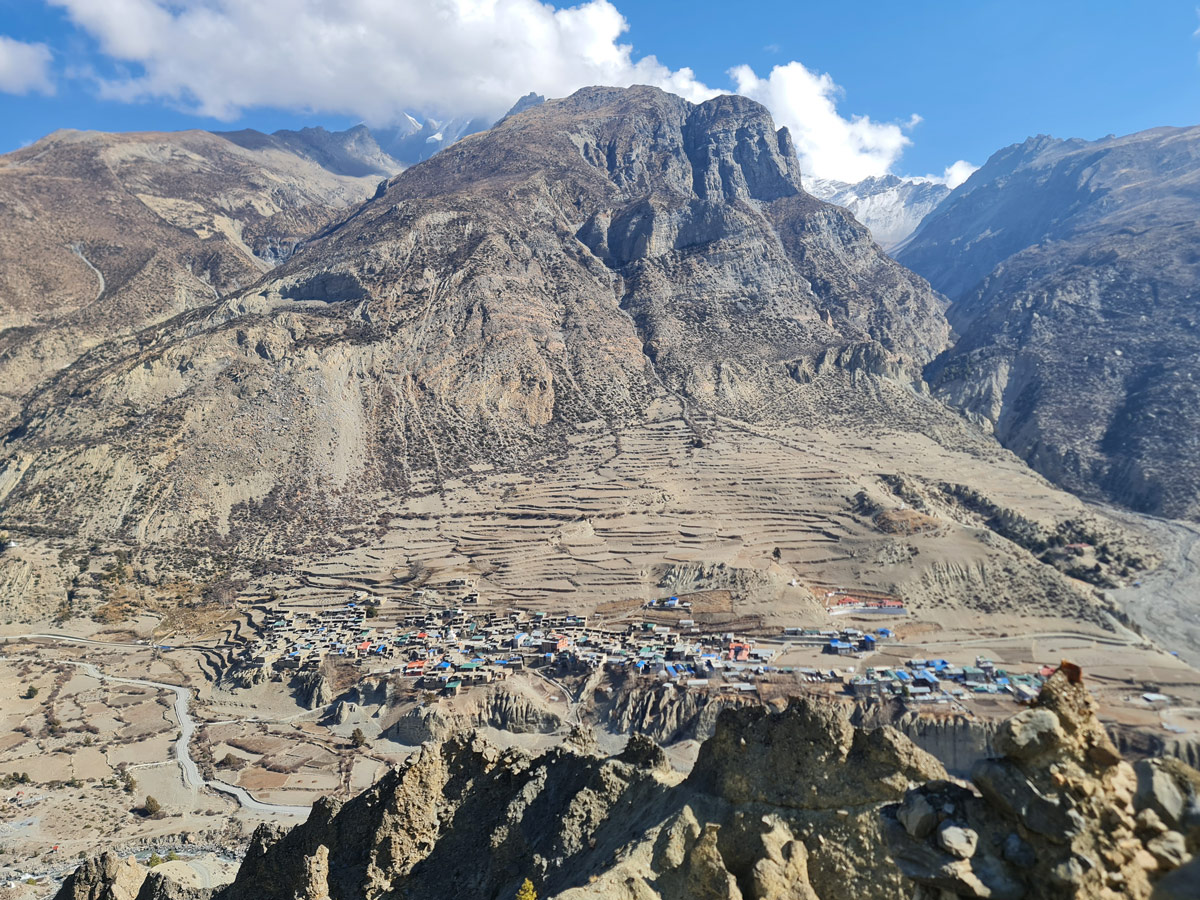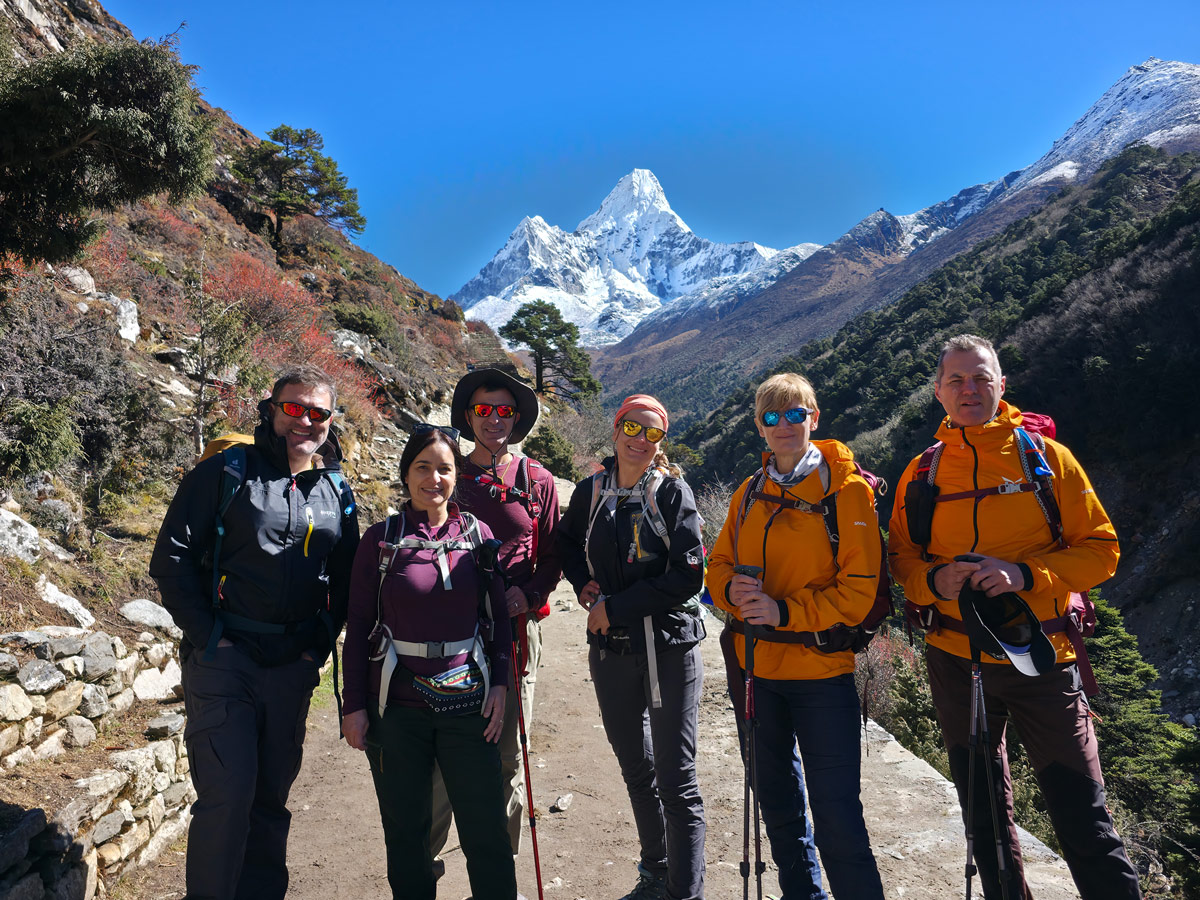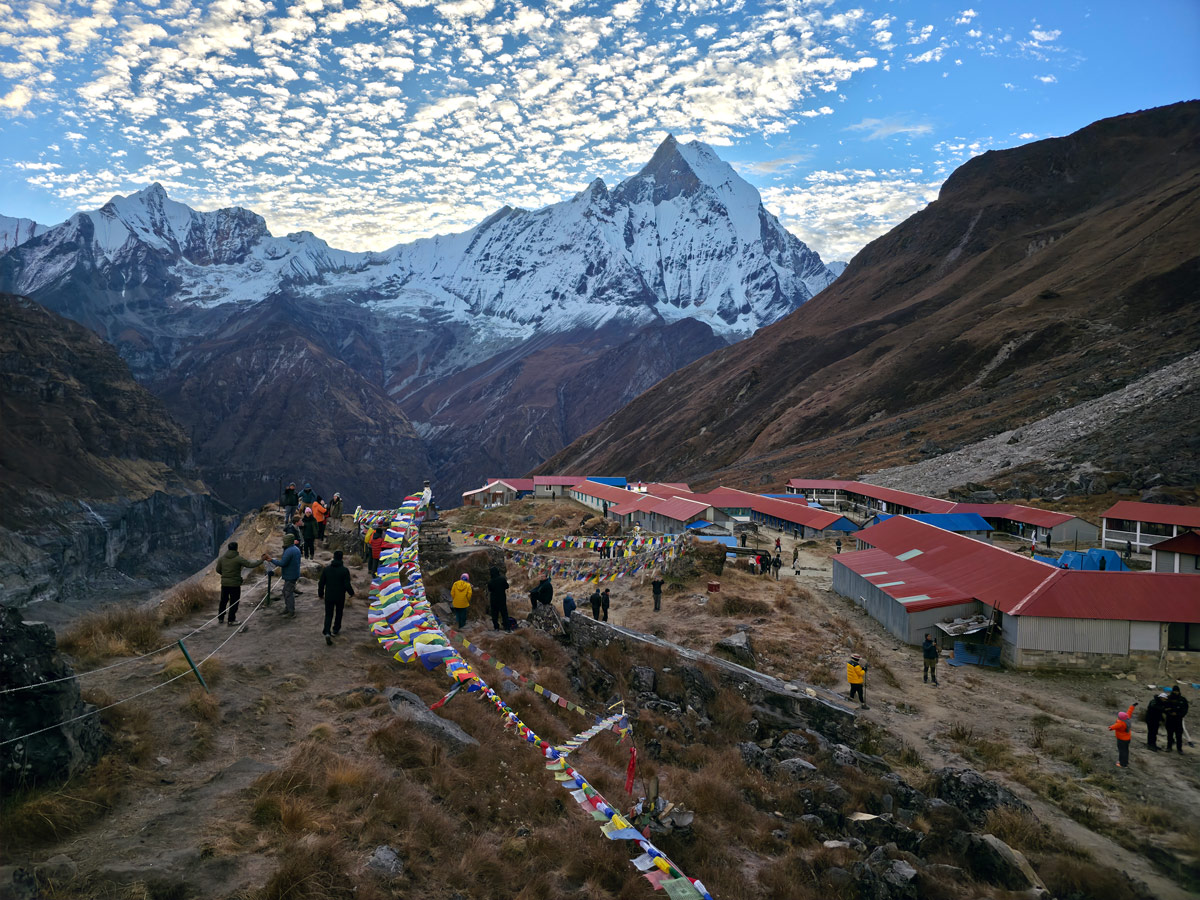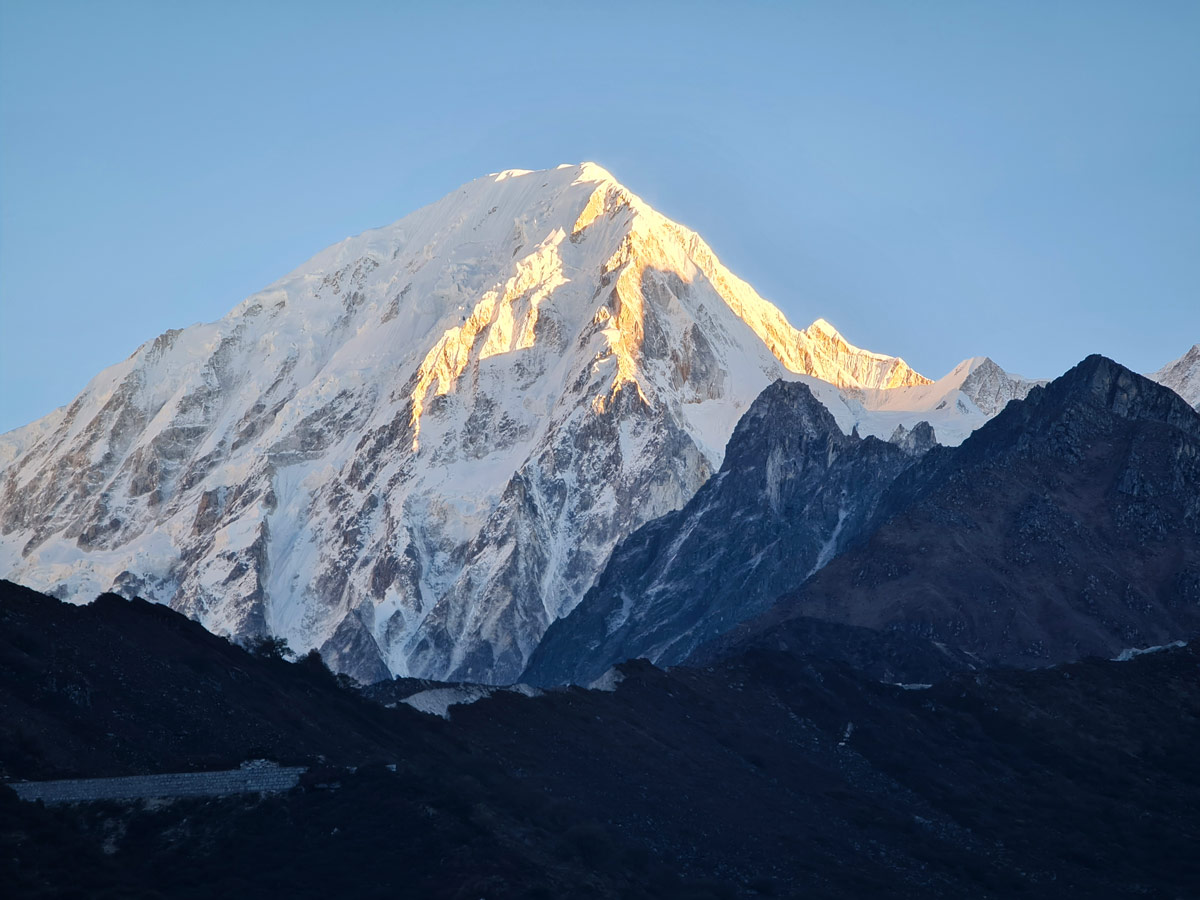The Annapurna Circuit Trek is an iconic journey in itself and it beckons trekkers from all over the world. With the majestic views, the enriching cultural encounters, the variety of landscapes, and the exotic wildlife encounters, the trek is a must-visit adventure for intrepid trekkers.
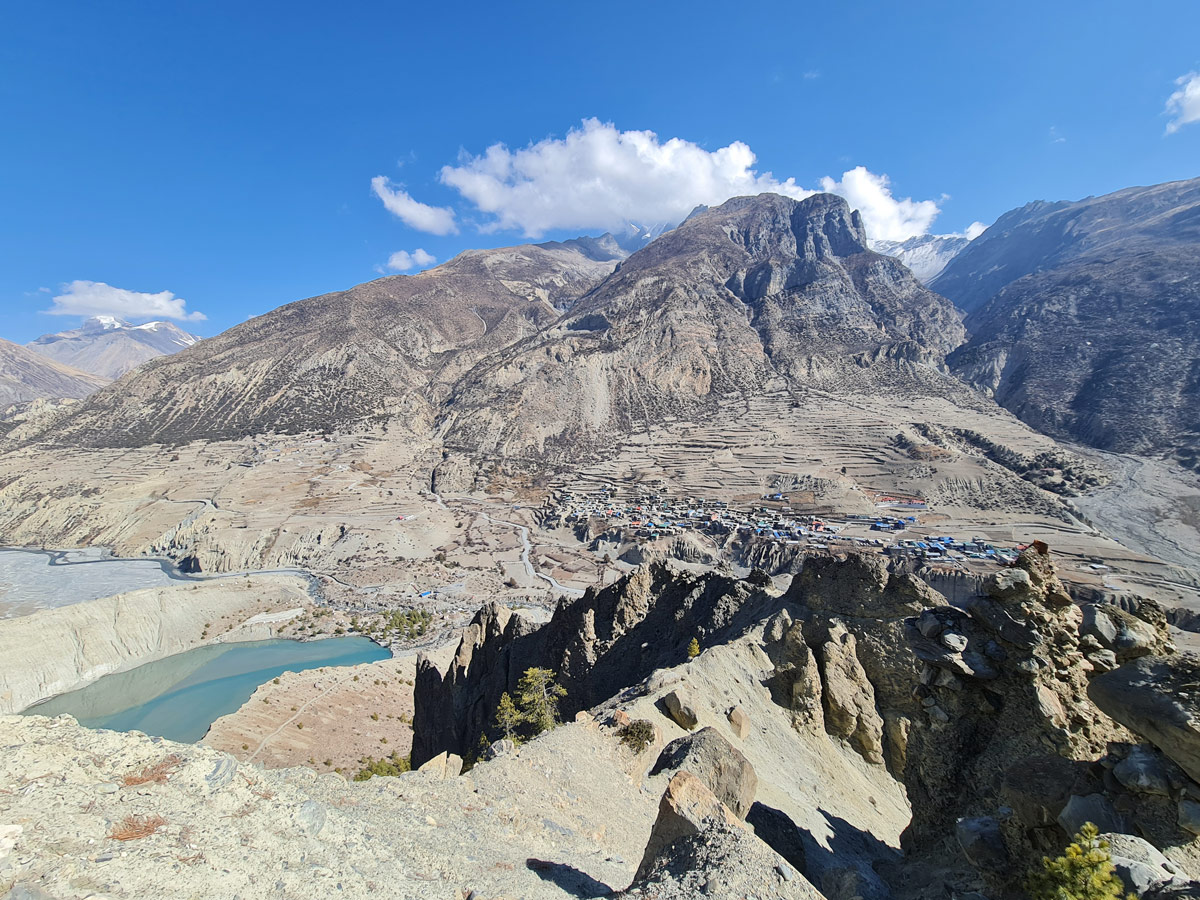
However, there is much more to the beauty of the trek than just the activities that await you on the trail. You can take several detours during your rest day at Manang and make the most of your experience. We’ll tell you how!
Importance of a Rest Day in Manang
The Annapurna Circuit trek, although a beginner-friendly trekking route, is a high-altitude trek that takes you as high as 5,416 meters. As you ascend higher, the air starts to thin out and there is a very limited availability of oxygen.
This leads to altitude sickness and symptoms like headache, fatigue, loss of appetite, loss of sleep, nausea, vomiting, fatigue, dizziness, along with others start to show which can even be life threatening at times.
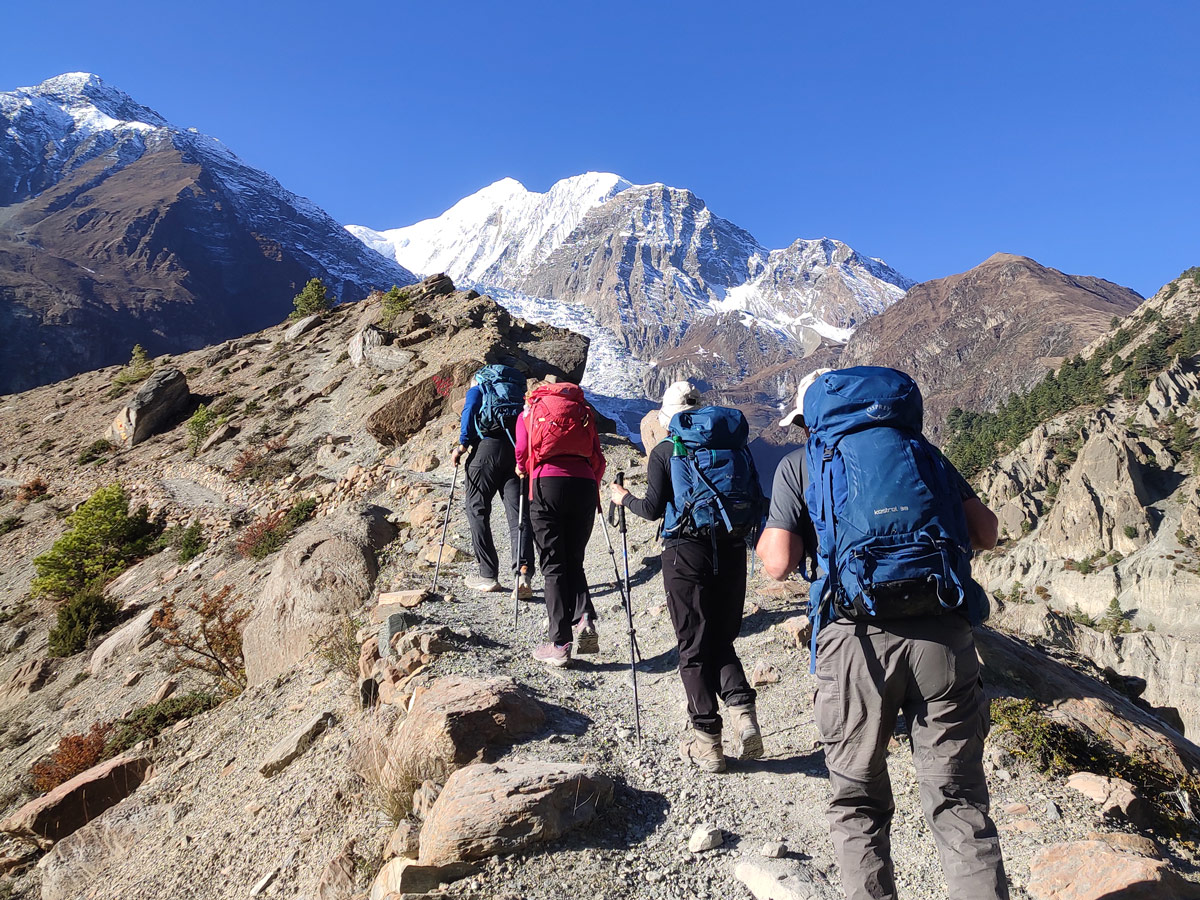
Therefore, to prevent altitude sickness, proper acclimatization is of key importance. This allows you for a day’s break from major elevation gain and gives rest to your body while allowing it to adapt to the change in altitude.
During acclimatization day, you can also explore the surrounding areas and hike to a higher altitude but return to the acclimatization point to speed up acclimatization by following the ‘climb high, sleep low’ principle.
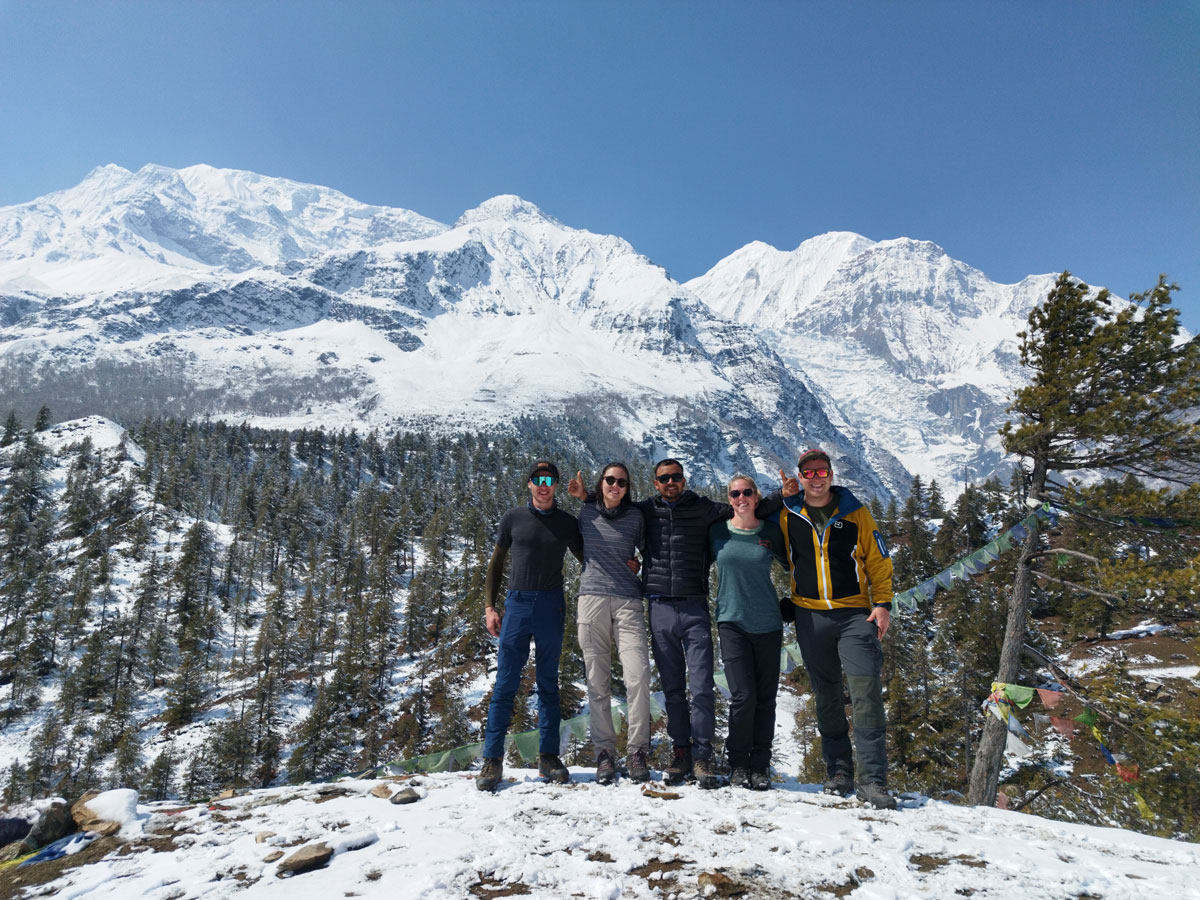
Now, why acclimatize at Manang? It is because Manang lies at an optimal altitude which is neither too high nor too low and it is the best suited for acclimatization. Manang is also placed in your itinerary in a way that it comes at a time when you really need rest.
So, after a day or a couple of days of proper acclimatization at Manang, your body will be much suited to continue and conquer the trek further without facing many challenges.
Understanding Manang
Located at an altitude of 3,540 meters, Manang is a name that you might have come across a lot during your research of trekking in Nepal. It is one of the prime examples of the remote Himalayan beauty of Nepal.
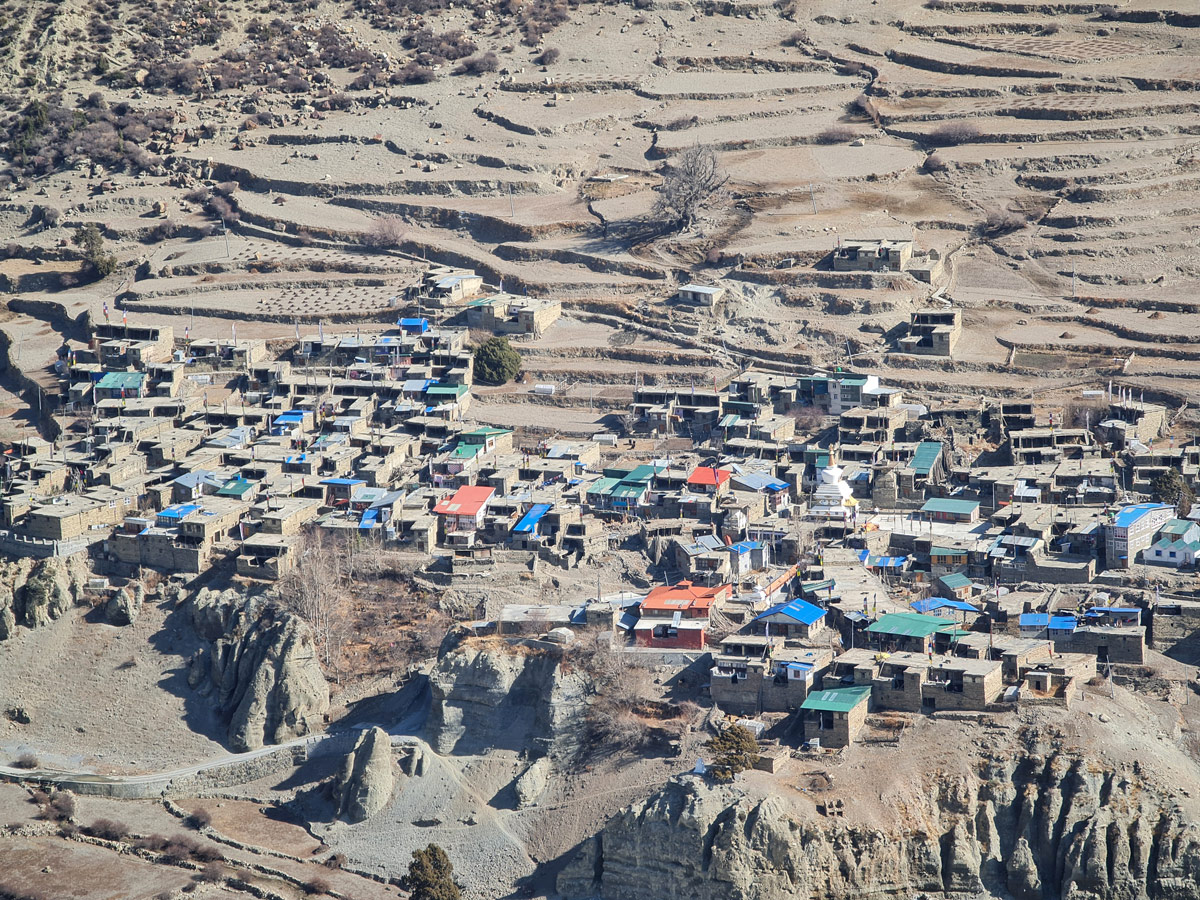
A unique combination of Tibetan and indigenous influences, Manang is a place brimming with natural beauty as well as cultural charm. It is the main acclimatization spot on the Annapurna Circuit trek, but its significance lies way beyond that.
Although famous as a ‘resting spot’, the allure of Manang is no less thrilling than the entire trek. So, lace your boots and be prepared for a truly adventurous stay at this stunner of a village.
Khangsar Village
The Tibetan traditional village of Khangsar is a hidden gem of the region which is untouched and often overshadowed. Although located in isolation, it is very beautiful and features cultural richness and stunning panoramas.
Located at an elevation of 3,734 m, the village lies in the scenic route towards Tilicho Lake and is surrounded by stark Himalayan giants.
One of the highlights of this village is the majestic views that it offers of the beautiful Tilicho Peak and Annapurna massif. This village is also known as the gateway to the majestic Tilicho Lake Trek.
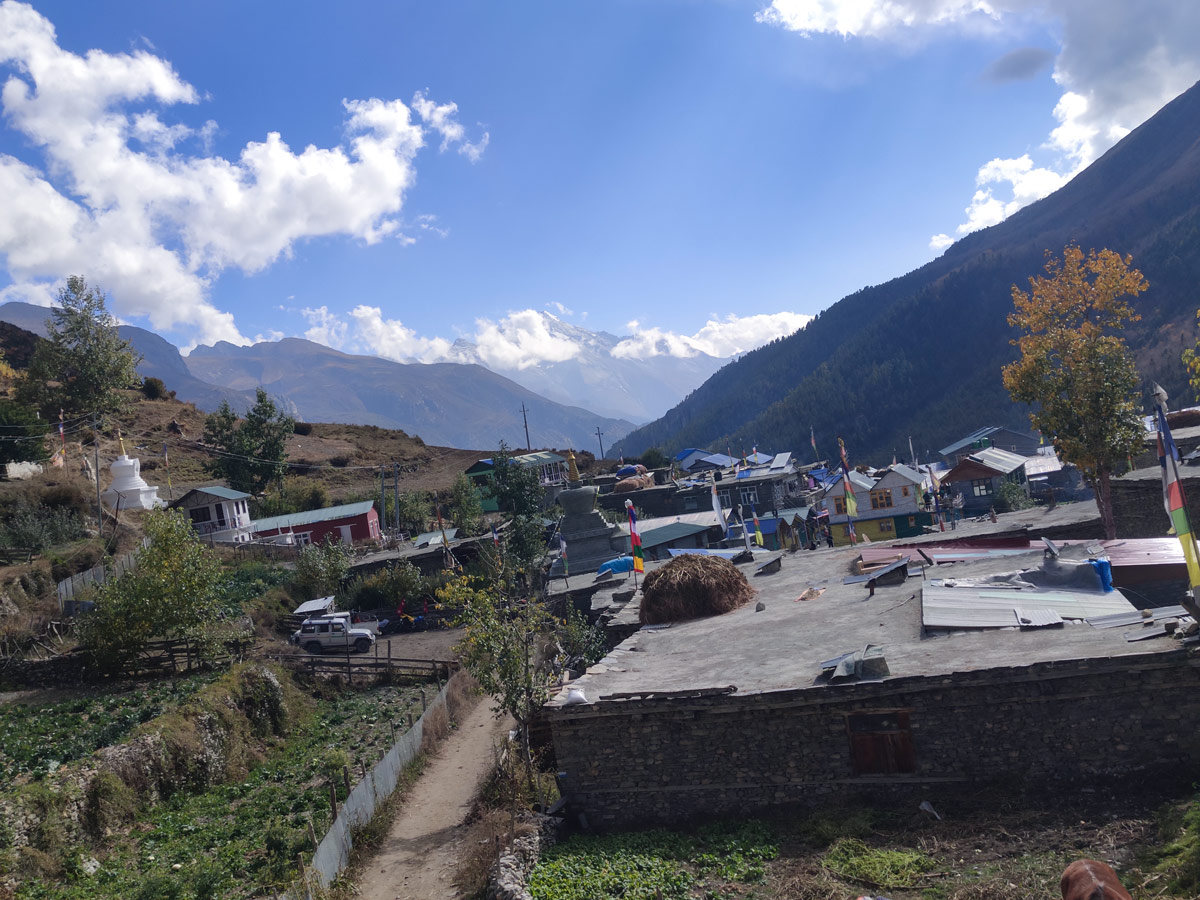
The village inhabits Gurungs and everything in Khangsar speaks volumes about the history of the region. The houses are mostly made up of stones and mud while the village is dotted with several chortens, mani walls, and prayer flags.
Khangsar also has an old monastery reflecting the spiritual heritage of the place. Recently, tourism has started flourishing in the village due to the rustic appeal of it and people have started visiting it more.
A visit to Khangsar is a great way of utilizing your rest day in Manang as you get to witness the scenic beauty along with rich cultural heritage. You will also be treated to the delicious Gurung delicacies while in the village.
Ice Lake
The region around Manang is widely known for the several lakes that it features. Among those popular lakes, one is the Ice Lake (locally known as Kicho Tal) which is a good place to visit during acclimatization in Manang.
Nestled amidst the dramatic landscape dotted by the Himalayas, this is a glacial lake located at an altitude of 4,600 meters. It boasts stunning views of the Himalayas and the Manang valley too.
It is one of the best activities to do on a rest day as it helps you in acclimatization while also making you familiar to some of the rugged terrains featuring steep ascents in the Manang region.
Make sure to begin early if you wish to avoid the strong winds that flow in the trail during the afternoon. The path is slightly demanding, and the round trip can take around 6 to 7 hours depending on your pace.
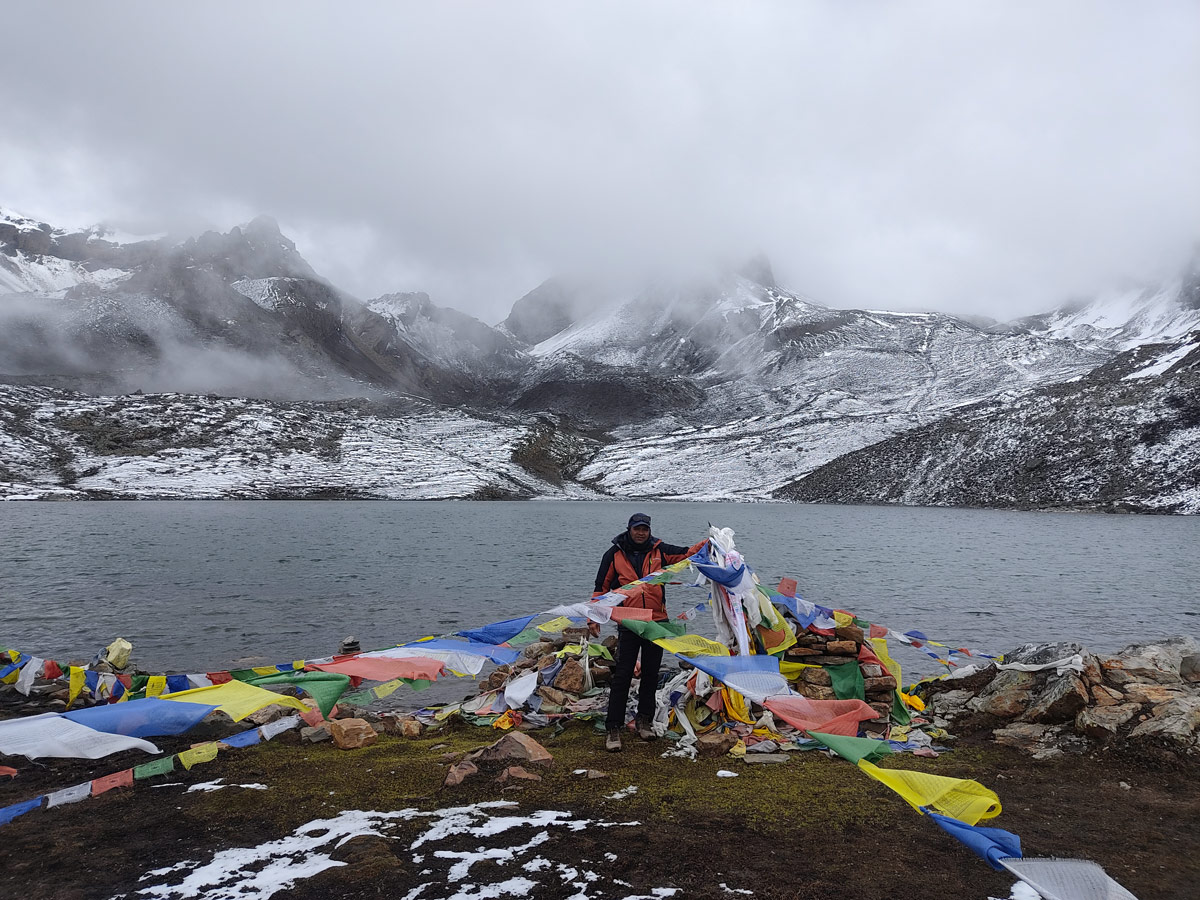
The trails undergo a transformation, and you will come across landscapes including lush greenery followed by arid landscapes and juniper forests as you go higher. The path becomes steep and rocky as you approach the lake.
Given the longer duration, it is a less travelled road when it comes to acclimatization hikes. Therefore, you will find that there is no crowd here which further allows you to enjoy your detour in solace.
Majestic views of Gangapurna, Annapurna, Tilicho Peak, and more unfold as you go higher. The lake itself is a panoramic stunner as it is frozen and covered by a thin sheet of ice reflecting the clear skies and surrounding peaks.
Gangapurna Lake
The Gangapurna Lake is a glacial lake formed by the Gangapurna mountain and it is a turquoise jewel located at a short distance from Manang. It is one of the most breathtaking natural attractions of the Annapurna Conservation Area.
It boasts a crystal clear reflection of the surrounding peaks on its water which makes it the perfect place for photography as well as sightseeing because you can see the Gangapurna Peak piercing through the skies while standing alongside its reflection.
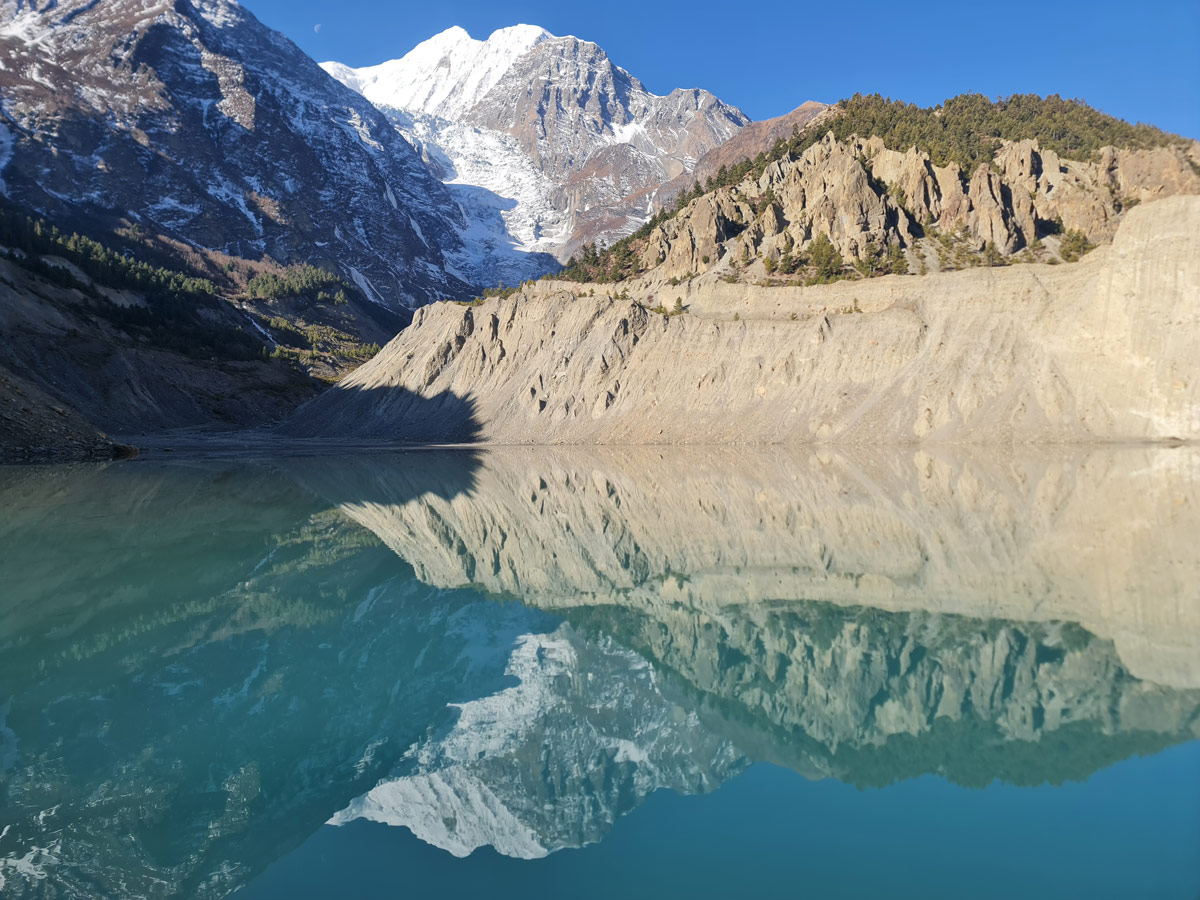
Located at a high altitude of around 3,500 meters, this lake also boasts peaceful surroundings. There is not much crowd here and you get a moment of silence away from the hustle and bustle of the cities allowing you for reflection.
The lake is also surrounded by the dramatic Himalayan landscape where you can spot several animals, flowers, and birds too. Small and unique mammals might pay you a quick visit which makes this place a good spot for wildlife lovers.
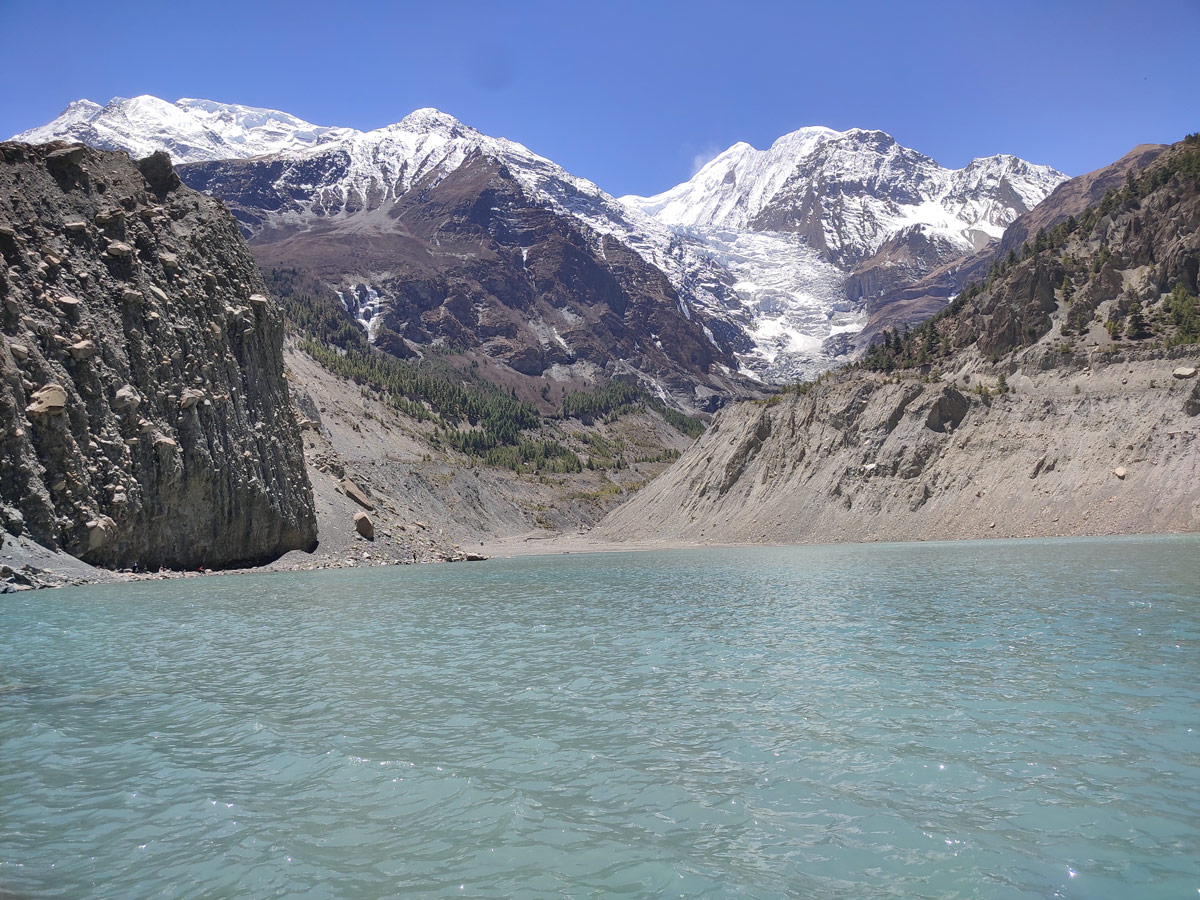
The Gurung people of the area also consider the lake to be of spiritual value and they keep the surroundings clean while activities like swimming and contaminating the water and littering the surroundings are considered to be disrespectful.
Milarepa Cave
Located at a short distance from Manang, the Milarepa Cave is a worthy detour as it takes you on a historical and spiritual journey along with presenting some of the fascinating natural formations.
It lies at the trails going upwards towards Upper Pisang and it was names after the Tibetan yogi and poet- Milarepa. It is believed that this cave is one of the few caves where Milarepa meditated and created some of his profound teachings.
The hike to Milarepa Cave is both challenging and rewarding. It takes around one and a half hours to reach the place from Manang as the trail features steep ascents and you also need to gradually ascend given the altitude difference.
However, the trails are well marked and well-trodden which makes the ascent manageable. Upon reaching the cave, you get beautiful panoramas of the Annapurna range up close and also the views of the valley that lies below.
Surrounded by rocky outcrops and sparse vegetation, the entrance of these caves is beautifully dotted with colorful prayer flags. And inside the cave lies a small altar where the visitors can see several representations of Milarepa.
Fascinated by the history surrounding the caves, visitors often leave some offerings inside the cave, and you might also find people meditating here in the spiritual aura of the cave.
For people trekking the Annapurna Circuit, this cave provides a meaningful and spiritual angle to their journey while giving more knowledge about Buddhism. And the elevation gap covered during this journey can also be helpful for acclimatization.
Braga Gompa
While at Manang, you will also get a considerable amount of time for introspection and indulging in spiritual activities. You can begin the cultural exploration of the region by visiting the ancient Braga Gompa.
This monastery is considered to be one of the nicest spiritual attractions of the Himalayas along with being the largest monastery in the Manang periphery. It is 600 years old and of high religious and cultural significance.
Situated in a particularly rustic landscape, this monastery boasts stunning views of the rural Himalayan settlements. As you step inside, you will be amazed to find a much more contrasting view than the outer appearance of the monastery.
It features countless intricate paintings, murals, and statues, all speaking volumes about Hinduism. The atmosphere here is also very calm and peaceful as it is surrounded by fluttering prayer flags all around and many devotees make their way to the gompa.
Amidst the mighty Himalayas of the region, Braga Gompa gives you a peaceful respite where you can indulge in activities like meditation or simply enjoy the view while being surrounded by peaceful vibes.
Praken Gompa
Further continuing the spiritual exploration of Manang, you can visit the Praken Gompa which is one of the most beautiful and significant places in the region. Located at an altitude of 3,945 m, Praken Gompa is an ancient Buddhist Stupa.
Located atop a ridge, the ascent to this monastery is a fair challenge for all kinds of trekkers. However, the experience is surely worth it as upon completing the ascent you will find that the monastery is surrounded by several peaks and boasts a fantastic view.
Surrounded by the Himalayan giants like Gangapurna, Tarke Gang, and Annapurna on the outside, the insides of this monastery are adorned with several murals and paintings conveying the history and teachings of Buddhism with its beautiful art and architecture that takes you back in time.
The serenity and tranquility of the monastery allows you a break from the outer world and gives you a chance for introspection through means like meditation and breathing exercises.
It is also said that Lama Tashi resides at Praken Gompa, who is an enlightened Buddhist monk, and he provides you with protection as you cross the Thorong La Pass during the Annapurna Circuit trek.
Besides the spiritual and cultural value that it holds, Praken Gompa is also among the reasons why you should trek the Annapurna Circuit as it is also a 2.62-mile rock climbing route giving you a unique experience.
Manang Culture Museum
Giving a pure glimpse into the lives and history of the Manang people, the Manang Culture Museum is another stop that you can make to delve further into the fascinating world of the Manang culture and an authentic representation of the Nyeshang way of life.
The museum is basically like a traditional house featuring a mesmerizing and authentic collection of the artifacts that represent the unique way of life, history, and traditions of the Nyeshangtes.
It is also used to celebrate the local Badhe festival. Several tools used for everyday tasks in the mountains are available for display here like the yak-hair ropes, wooden churns, cattle stall, and farm implements.
One of the major highlights at this museum is the collection of several costumes and masks that are worn during the local festivals of Manang. The things present here also showcase the ingenious adaptation of the people to the high-altitude environment.
All in all, the Manang Cultural Museum is a must visit place for those wanting to explore the cultural heritage of the place through several relics and also to know more about the locals inhabiting the region.
Shopping in Manang Valley
To bring an end to an eventful day at Manang, you can indulge in some shopping in the vibrant markets of the valley where you can find perfect local souvenirs and gifts to take a piece of Manang back with you.
The local shops and stalls here are brimming with unique souvenirs like traditional handicrafts, woolen garments, arts and artifacts, thangkas, colourful prayer flags, and more.
In addition to that, you will also find mouth-watering local cuisines, often with a Tibetan influence, like Thukpa, Tsampa, Tibetan Bread, and the delicious apple pies and pastries at the high-altitude bakeries of the region.
